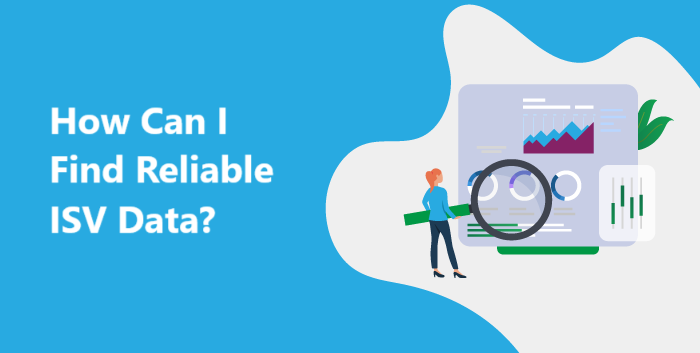Often, the best way to get to the bottom of things is to go straight to the source. For data on market trends or user behaviors, surveys can be valuable tools. And as an ISV, you have industry expertise and extensive user and peer networks that put you in a great position to conduct research. The answers you collect can give your business an edge, as well as provide new insights to your customers and the industry as a whole.
ISVs can approach surveys in a variety of ways. One option is to survey your clients (or people like them) to learn how they use technology and the types of outcomes they get. Combined with other data, you can provide benchmarks that will help your customers evaluate their performance. A different strategy is to ask this group if they are planning to implement new technology or what their outlook is for the future — that’s information that your customers could use to keep an eye on the competition.
Another approach is to survey your customers’ end users. The insights from these surveys can help businesses tailor products and services to create better customer experiences, identify trends, and forecast with more insight.
Additional benefits of publishing survey results
Although the information you collect through a survey is the primary goal, there are four other, compelling reasons ISVs should conduct surveys and publish results:
- Become a resource for information: Your customers look to you as a resource of useful information. Your experience developing solutions for your industry, your knowledge of workflow optimization, and your ability to solve problems with your software application are all reasons they want to pick your brain. Add reliable statistics to the resources you offer to keep businesses in your market coming back to your website when they need answers.
- Collect leads: A survey report that contains valuable insights will be an irresistible download. You can use it to encourage visitors to your website to provide their contact information in exchange for the report. Remember, you must abide by regulations such as GDPR when collecting and using that data.
- Increase backlinks to your website: Journalists, bloggers, and marketers love statistics. Stats support arguments, define things specifically, and describe things precisely. Good writing isn’t vague (eg analysts predict the market will grow). It’s specific (eg analysts predict the market will grow at a CAGR of 19 percent from 2018 to 2021). Best practices dictate that writers use statistics, whenever possible, in their articles. So in their quest to be good writers, journalists, bloggers, and content marketers scour the internet for statistics, use them in their writing … and link to them. Those backlinks will help improve your organic search ranking, help search engine bots discover and index your site, and send referral traffic to your website.
- Improve your product: When you ask users about your application, you’ll get feedback from their point of view that can help you understand its strengths and weaknesses. And when you survey your customers’ end users, you will have a deeper understanding of what your customers need to deliver the types of customer experiences and services that can help them operate competitively. With these insights, your next release can include features that your customers really want and need, helping to differentiate your application in the marketplace.
How to conduct a survey
Conducting a survey in a SaaS world is easier and more budget-friendly than you may think. Once you decide on the goal for the survey, you can use an online service such as Survey Monkey or AYTM to help guide you through the process, step by step. Regardless of the platform you use for the survey, there are some best practices to keep in mind:
- Keep the survey focused on one topic.
- Keep multiple choices to minimum.
- Keep surveys as short as possible.
- Before you send a survey, test it on a few people to make sure instructions are clear.
Using an online platform, survey results will be compiled for you, saving time and ensuring accuracy.
How to use survey data
An advantage of using survey data for content marketing is the extra content mileage you can get out of it. Develop a formal report, e-book, and infographic. Blog about your survey, and feature it in your newsletter. Write a press release, post it, and send journalists and bloggers who cover your industry a complimentary copy of the report. Share survey results on social media — you can even create posts based on individual stats. In addition, your survey could become the centerpiece of your next webinar series or marketing campaign.
Enjoy the attention
If your survey yielded new insights, uncovered new information, or revealed a trend, the next step is to sit back and watch people request more information and backlink to your survey in their online content. Surveys can significantly increase brand awareness — after people see the numbers, their next instinct is to see where they came from.
If you’re looking for a new idea to jumpstart marketing, increase web traffic, and engage customers and prospects, ask yourself if there are questions your industry needs the answers to — then go ask them.








